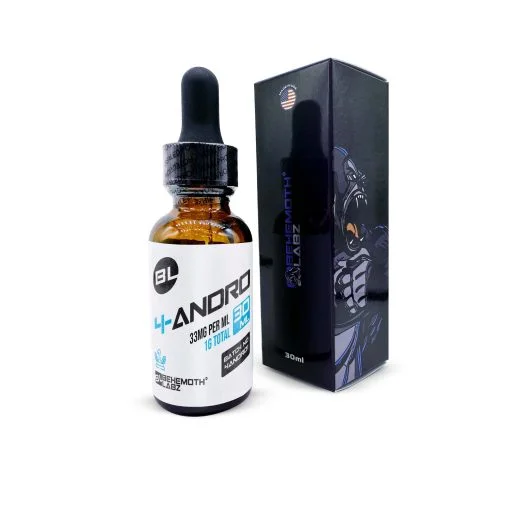Peptides
Sermorelin VS BPC 157: A Detailed Comparison
Sermorelin and BPC 157 are laboratory-made peptides with different potential to influence various pathways in experimental models. Sermorelin is the combination of 29 amino acid molecules, whereas BPC 157 is 15 amino acid molecules. They have shown promising benefits in research subjects during laboratory trials.
But what are these promising benefits, and how do they perform them? Answers to these questions and other details are given in this blog.
Read this blog to get an insight into the differences, similarities, and other related details of sermorelin and BPC 157 peptides.
What is Sermorelin Peptide?
Sermorelin is a synthetic peptide. It consists of 29 amino acid molecules. These amino acid molecules are connected through peptide bonds. In preclinical studies on animal models, it has been shown to act as a growth hormone secretagogue or growth-hormone-releasing peptide. Growth hormone secretagogues are those compounds that influence the pathways linked with growth hormone secretion in laboratory models.
Sermorelin, being a growth hormone secretagogue, also exhibits the same properties in laboratory research on experimental models. Exhibiting such properties may affect the biomarkers associated with anabolic activities, lipolytic activities, and energy expenditure pathways in research subjects in preclinical or lab trials.
What is BPC 157 Peptide?
BPC stands for Body Protection Compound. It is a naturally occurring compound that consists of 15 amino acid molecules. Due to its beneficial nature, researchers have also synthesized its laboratory-made version. This laboratory-made BPC 157 has been shown to influence various pathways in research subjects during preclinical trials.
While influencing the pathways, it may affect the patterns linked with tissue repair modulation, skeletal tissue regeneration, and modulation of pro-inflammatory cytokines in experimental models during preclinical trials.
Key Similarities Between Sermorelin and BPC 157 Peptides
Here are the key similarities between Sermorelin and BPC 157 peptides:
- Synthetic and Lab Developed: They are formed in the laboratory under the researchers’ controlled and monitored environment.
- Belong to the same Peptide Family: They belong to the same peptide family. Peptides are small chains of amino acid molecules connected by peptide bonds.
- Research Use Only: Sermorelin and BPC 157 are intended for laboratory research use only. Human consumption of these compounds is strictly prohibited.
- Available in a Similar Form: They are available in injection forms.
Similar Potential Benefits of Sermorelin and BPC 157
The similar potential benefits of sermorelin and BPC 157, as observed during research studies, are as follows:
Tissue Repair Modulation
Both compounds have shown potential to influence the pathways associated with tissue repair modulation in research studies. Sermorelin may affect tissue repair pathways by influencing growth hormone patterns. BPC 157 may influence tissue regeneration through modulation of fibroblast activity and collagen organization in research subjects during laboratory trials.
Modulating Pro-Inflammatory Cytokines
During laboratory research on animal models, Sermorelin and BPC 157 may also modulate proinflammatory cytokines. Sermorelin may modulate pro-inflammatory cytokines through the actions of growth hormone or IGF-1. On the other hand, BPC 157 may modulate it by affecting the patterns associated with NF-κB and TNF-α in research subjects.
Skeletal Muscle Integrity
Both sermorelin and BPC 157 have also been observed to affect the pathways associated with muscle integrity or hypertrophy. BPC 157 may influence such pathways through myogenic repair, whereas Sermorelin may affect these markers through protein synthesis in research subjects in laboratory trials.
Key Differences Between Sermorelin and BPC 157 Peptides
Key differences between Sermorelin and BPC 157 peptides are as follows:
- Amino Acid Difference: Sermorelin consists of 29 amino acid molecules, whereas BPC 157 consists of 15 amino acid molecules.
- Pathway of Action: Sermorelin may indirectly act on the pathways linked with growth hormones. On the other hand, BPC 157 may influence the markers associated with cellular-level modulation in research subjects.
- Type: Sermorelin is a synthetic growth-hormone-releasing peptide, whereas BPC 157 is formed in the laboratory from a segment of a naturally occurring peptide.
- Mechanism of Action: Sermorelin peptide may work by modulating pathways associated with growth hormone. Influencing the growth hormones in research subjects may affect various pathways. On the other hand, BPC 157 may work by impacting the patterns linked with wound repair and myogenic repair in research subjects during clinical trials.
- Research Focus: The research focus of sermorelin peptide is on its influence on myogenic repair, skeletal muscle integrity, and energy expenditure pathways. On the other hand, BPC 157 peptide may focus on wound healing and modulating pro-inflammatory responses in laboratory models during research trials.
Legal Status
Sermorelin and BPC 157 peptides are not approved for human consumption by the FDA and WADA. However, researchers and scientists can use them for laboratory research using animal models.
Research Protocols and Guidelines
Here are a few research protocols and guidelines that must be followed while researching these peptides:
- Always purchase these peptides from a trusted seller.
- Check the purity and quality of the peptides.
- Label all the instruments in the laboratory accordingly.
- Before your research, be aware of the side effects.
- Keep your experimental models hydrated.
- Check the health condition of experimental models.
- Monitor your research periodically.
- Note down all findings of the research.
Final Thought
Sermorelin and BPC 157 are the two laboratory-made peptides. They are used in laboratory trials to explore their influence on various pathways in experimental models. Research use only, peptide family, and availability in the same form are the key similarities between sermorelin and BPC 157. On the other hand, the mechanism of action and primary research focus are the key differences. They are currently not permitted for human consumption. Furthermore, the recommended research protocols and guidelines must be followed in a monitored laboratory environment to ensure accurate research results.
Disclaimer: BehemothLabz’s products are for research and laboratory purposes only. They are not allowed for human consumption. Moreover, this blog is intended for informational purposes only and does not promote the human consumption of peptides. Terms such as research subjects, laboratory models, and laboratory animals refer to non-human experimental models used in research.
Frequently Asked Questions
What is the best place to buy Sermorelin and BPC 157 peptides online?
The best place to buy Sermorelin and BPC 157 peptides is BehemothLabz. At BehemothLabz, all products are particularly designed to meet your research objectives and goals. Moreover, our products are ingredient-rich and contain the highest quality. Our prices are also reasonable and within your buying range. Apart from that, we also deliver products internationally.
What are the downsides of Sermorelin?
The downside of sermorelin, as observed during research trials on animal models, is injection site irritation and inconsistent stimulation of growth hormone patterns. Other downsides may include headaches and mild neural stimulation in research subjects during clinical trials.
Is Sermorelin a steroid?
No, sermorelin is not a steroid. It is a synthetic peptide consisting of small chains of amino acid molecules.
What is BPC-157 used for in laboratory research?
BPC 157 may influence the pathways linked with cellular repair, skeletal muscle integrity, and modulation of energy expenditure in experimental models in research studies.
Is BPC 157 a growth hormone?
BPC 157 is not a growth hormone but is studied for its potential role in tissue repair and other healing processes in research models.
Does BPC 157 work immediately in experimental models during laboratory trials?
The effects of BPC 157 may be seen very quickly in research subjects during research investigations. Some studies suggest that the duration to see the results of BPC 157 is from days to weeks. Furthermore, it also depends on the health status of the animal models used in research studies.
References:
- Ishida, Junichi, et al. “Growth hormone secretagogues: history, mechanism of action, and clinical development.” JCSM rapid communications 3.1 (2020): 25-37.
- Walker, Richard F. “Sermorelin: A better approach to management of adult-onset growth hormone insufficiency?” Clinical interventions in aging 1.4 (2006): 307-308.
- Vukojević, Jakša, et al. “Pentadecapeptide BPC 157 and the central nervous system.” Neural Regeneration Research 17.3 (2022): 482-487.
- Seiwerth, Sven, et al. “BPC 157’s effect on healing.” Journal of Physiology-Paris 91.3-5 (1997): 173-178.












